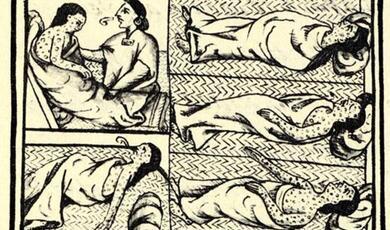Children's Self-Control and the Health and Wealth of their Nation: Tracking 1000 children from birth to maturity
Share
- Details
- Transcript
- Audio
- Downloads
- Extra Reading
Policy-makers are considering large-scale early intervention programs to enhance children's self-control, with the aim of reducing crime and improving citizens' health and wealth. Experimental studies and economic analyses are suggesting that such programs could reap benefits for a nation. Yet, how important is childhood self-control for the health, wealth, and public safety of the adult population?
Following a population-representative cohort of 1000 New Zealand children from their birth in 1972 to age 38 in 2011, we show that childhood self-control predicts unplanned single-parenting, high-school drop out, criminal offending, addiction, heavy smoking, personal finances, savings for retirement, and physical health and illness. These effects of the children's self-control could be disentangled from their intelligence and their parents' social-class.
In another cohort of 500 UK twin-sibling-pairs, the sibling with better self-control at age 5 had better life outcomes than his twin sibling with weaker self-control, despite sharing the same parents and family background. These predictions from childhood followed a gradient of self-control, suggesting a nation's health and wealth could be improved by enhancing self-control in all of its children. Early interventions enhancing the population's self-control skills might reduce a panoply of societal costs, save taxpayers money, and prepare everyone for successful aging.
This is part of a special series of lectures in collaboration with the Institute of Psychiatry.
Download Transcript
3 July 2012
Children’s Self-Control and the
Health and Wealth of their Nation:
Tracking 1000 Children from Birth to Maturity
Professor Terrie Moffitt
Welcome everyone! My name is Terrie Moffitt. I’m really grateful for this wonderful opportunity to present some of our research to you this evening, and I want to begin by showing you a very short video clip, made for us by Television New Zealand. It’s only 90 seconds. It announces a documentary that’s being made about our research that’s going to be shown on television later this year.
[Clip plays]
That should appear on your television later this year.
The Dunedin Study has been going on now for about 40 years, and it’s produced over a thousand publications, one for every 20 days of the Study members’ lives. There’s been a variety of findings on different medical and social topics over the years. Tonight’s focus is on one recent project on Self-Control, Health, Wealth and Public Safety.
So, overall, our research aims to find ways to prepare today’s children for tomorrow. There are several reasons to do this kind of research. First, there are fewer children in tomorrow. Children are going to become increasingly valuable to us. At the same time, demographers tell us there are going to be many more older people, and that means that each young worker, each child who becomes a younger worker, is going to need to support more of us older people. And then the third aspect is that life expectancy is growing longer and longer, and that means that tomorrow’s children are going to have to prepare for a much longer old age of their own.
So, here’s an outline of the lecture this evening, so that you can follow along and know when we’re getting close to the end, in case you’re desperate!
I want to begin by asking: why should we study self-control? I’m going to show you evidence this evening from the Dunedin Study that childhood self-control predicts success and failure in adult life, above and beyond intelligence and family wealth. This is really important because everyone already knows that success in life follows from high intelligence and from good family socioeconomic resources, but it’s also widely known that it’s very difficult, if not impossible, to eliminate the wide differences between people on their IQ scores and their social class. In contrast, self-control skills are thought to be something that might be teachable.
We asked our data: would teaching self-control to children really improve important indicators of their life success? There’s lots of new interest in the concept of self-control among behavioural scientists these days because self-control is thought to be more necessary now than ever before in world history. We need our self-control to avoid become obese in an era. We need our self-discipline to maintain physical fitness in an era when our jobs are sedentary. We need our willpower to sustain our marriages when it’s very easy to get a divorce. We need self-control to prevent becoming addicted in an era when it’s easy to get hold of illegal substances. We need to resist spending in an era of sophisticating marketing. And we have to now save for our own old age in an era without anymore guaranteed pensions.
So, what I want to do now is tell you a little bit about the Dunedin Study. So, first, we travel to the Antipodes, opposite from the world from here, to New Zealand, and this is where we did our work in self-control.
This slide outlines for you the design of the longitudinal study. It’s a little complex – you don’t have to study it in-depth. Just look at the top line and the bottom line. The top shows you that we studied all the babies born in one city, in one year, and there were 1,037 of them. This is important because they represent the variation in the full population. They represent all walks of life, all social backgrounds, and all ability levels. Then, if you look at the bottom right of the slide, you see that by the end of April this year, we finished collecting data on the study members when they were 38 years old, and, at that time, 96% of those still living took part in the research. This s important because it means that those who’ve been unsuccessful in life have not dropped out of the study along the way, so the findings I’ll show you today represent the whole population.
I now want to introduce you to two of the study members to give you an idea of how a longitudinal cohort study works, and so we will meet them on the day that they were first born and enrolled in this study. So, here they are, a little boy and a little girl, born in 1972 or 1973, and they were brought into the research unit at age three, and I’ll show you the ages when data were collected…at age five, seven, nine, 11, 13, 15, 18, 21. At each of these times that they’ve come, they’ve spent a full day of physical and mental testing, and also their parents and their teachers have been involved as well. So here they are at age 26. We assessed them at age 32, and mostly recently at aged 38, and we just finished following them up in April.
Let’s go back to the concept of self-control. We measured each child’s self-control during the first decade of life by assessing these sorts of qualities that you see here. So, a child who was impulsive, acts without thinking; can’t wait his or her turn; has a low frustration tolerance; dislikes effortful tasks; has fleeting attention, is easily distractible; lacks persistence; goes for the risky thing; or requires constant attention and motivation from an adult. This is the kind of measures we took in the first decade of life.
Now, you’re probably saying to yourself every child shows poor self-control at some point, and parents really need to say this because they fear for their child. We all know about the terrible twos and we all know that children are not supposed to have a lot of self-control – that’s why they have parents at the beginning of life. So, we looked to see whether children are having self-control problems at multiple ages and in multiple settings, so we made up a composite measure of our children’s self-control. We asked, if they had self-control problems, were they persistent across the ages three, five, seven, nine and 11 years, and were they agreed upon by multiple reporters who knew the child in multiple different settings. So, our research staff observed them when they came into clinics for assessments. We collected data from their parents at each of the assessment ages. We had four different teaches at age five, seven, nine and 11 rate the child’s self-control, and when the children were a bit older, we interviewed them about difficulties they might have with self-control. So, when I speak of poor self-control tonight, I don’t mean just a single instance; I mean a persistent and cross-situational pattern of poor self-control.
So, now, what are the consequences of this poor childhood self-control style? Here, we want to fast-forward 30 years. I’m going to show you some information about the health measures that we took. In our late-thirties, when our study members who are participants, our study participants visited our research unit, we assessed their health using a full day of different medical tests and examinations. So, we assessed their cardiovascular fitness in one session; in another session we assessed cardiovascular health in different ways; we did anthropometric measurements that allowed us to measure things such as obesity and overweight; we took their blood pressure; respiratory medicine specialists ascertained their lung function; and they even get the dreaded dental examination – this is one of our least popular data collection protocols. People will give you all kinds of blood before they’ll let a dentist look at their mouth. We did take also blood from them, and we did laboratory tests to measure things such as cholesterol levels, inflammation, and sexually transmitted infections.
So, to make one measure to summarise their health, we counted up whether each of the study members had clinically abnormal levels on all of our measures. So, we had a cluster of metabolic abnormalities, such as obesity, blood pressure and cholesterol; periodontal disease detected by the dentist; sexually-transmitted infection serology; inflammation biomarker, such as C reactive protein, white blood cell count, fibrinogen; and respiratory airflow obstruction indicators. So, if they were in the clinical range on any of these indicators, we counted that as a point.
This slide shows you that poor childhood self-control was linked to the number of these health problems that each study member had in their thirties. I’ll just walk you through this slide because you’ll see several more like this, so I want to make sure that you understand what it communicates. First, if you look across the bottom of the slide, you see that the cohort of 1000 individuals has been divided into five groups, from those with the lowest self-control to those with the highest self-control, who are on your right. So, each column contains about 200 children, in quintiles. Then, if you look up the height of the slide, the height of the chart indicates the number of health problems that I just showed you that were in the clinical range. So, what I want you to notice is the gradient. The poorer a child’s self-control, on the left, the poorer their adult health. I want you to keep an eye on this gradient because you’re going to see it over and over until it becomes a little bit boring, but we think it’s important and has good implications for policy.
So, we’ve also introduced a fascinating new assessment into our research into health, and that’s imaging the retina of the eye. Blood vessels in the retina provide a window on what’s happening to blood vessels in the brain, and that makes them – you might ask why would a person from the Institute of Psychiatry be interested in taking digital photographs of the eye. That’s the reason. Using retinal imagining, it’s possible for us to grade the micro-vasculature in the eye to try to get a sense of who might be at risk for stroke or other neurovascular diseases in the future. So you can see here what the back of a retina looks like and how well you can see the blood vessels.
Now, in this slide, we’ve plotted the width of the retinal venules, showing you that children with poor self control in the first decade of life have much wider retinal venules when they’re 38 years old, and as a risk factor for stroke and neurovascular disease.
Now, one way to think about how self-control affects health is to think about the pace of aging. All of the Dunedin Study members were born in 1972/73, in a one year period, so they were all exactly aged 38, give or take a month, when we assessed them. Whether we consider the health of their bodies, the health of their brains, or just look at their faces, some of these people are aging a lot faster than others, and that turns out to be predicted by self-control in the first decade of life.
This slide shows you an interview with a study member about substance dependence. So, a clinical psychologist is conducting the interview to make a diagnosis of substance dependence. We counted the number of different substances that each study member was dependent on at age 38, so we have tobacco dependence, alcohol dependence, cannabis dependence – those are the big ones, but also some harder drug dependence cases, and I’ll show you the data for those.
Now, the red line shows you that children who had poorer self-control when they were 38 said they were addicted to more different substances than children with better self-control. The blue line is interesting because, to verify their self-reports in the interview with the psychologist, we turned to reports provided about the study members by people who knew them well. They nominate their partners, parents, friends and co-workers that we can contact to get reports about their health and behaviour. This gives us an independent way to verify findings, based on self-reports, in the event that one doesn’t trust these entirely, as might be wise in the matter of asking people about their use of illegal drugs. But you see there, the blue line looks pretty much like the red line. Whether we interview the study members about their addiction problems or whether we ask their informants if they have problems with drugs and alcohol, we see the same thing. As adults, children with poor self-control, on the left, had more addition problems.
Now, I promised you wealth, so this is that part of the presentation. So, first, we look at their incomes and the prestige of their occupations. Children with poor self-control were earning less money than their more self-controlled peers – that’s the light blue line. Also, the dark blue line shows you that they held less prestigious occupations, so their occupations tended to be unskilled labour.
Then we interviewed them about their financial planfulness, because, even though you might have less wealth now and less occupational prestige now, if you plan carefully, you might have a better financial outcome in the future. So, we interviewed them about their attitudes towards saving and saving behaviour, asking things like, “Is saving for the future important to you? Do you save money by putting it away?” and we ascertained their financial building blocks – did they already own their own home, had they made investments, did they have a formal retirement plan.
Here’s our old familiar gradient… Children with less self-control, when they reach their late-thirties, were less oriented towards saving and had accrued fewer assets as building blocks for their financial future.
We looked also at their current level of financial struggles. There, we interviewed them about money management difficulties they might have – “Do you find it difficult to meet the cost of rent, bills, major repairs?” and my personal favourite, “Do you find yourself living from pay-check to pay-check?” And we ascertained their credit problems: had they been turned down for a credit card, sold belongings, declared bankrupt, or had a poor credit rating when checked with a credit agency.
And here’s the gradient, again. The green line shows you that the lower their childhood self-control, the more financial struggles they were having in their late thirties. The purple line shows you the opinions of people who knew them well. Those people agreed and rating them, the children with low self-control, as being poor money managers when they reached adulthood.
Now, let’s look at their crime… We did this by obtaining study members’ court…records at court convictions at all courts in New Zealand and Australia, and we do this in cooperation with the New Zealand Police, using their centralised computer system for Australasia.
Here, you see the percentage of the cohort members in our sample who had been convicted of a crime by their late-thirties. Just remember, across the bottom of the slide, you see the 1000 children in the cohort, divided into five groups, from low to high self-control, and each group contains 200 children. So, about 40% of the low self-control children had been convicted of a crime by age 38.
Next, we look at their parenting. We asked if poor childhood self-control also has inter-generational effects. By their late-thirties, about 75% of the study members, about 750 of them, had become a parent, and I must tell you, they got started late – the median age for first child bearing in New Zealand, the way it is in Britain, is about 32. So we waited and waited for these children, and finally, they’ve come at last – I felt like a grandparent of 1000 offspring! But now, at last, we have grandchildren. When any study member has a first child who reaches age three, we carry out a home visit to them, and there we have the parent and the child do several different activities together, and we make videotapes of the parent/child interaction. Then we send those videotapes to a team of experts on parenting, an independent team, and they code the videotapes for the study members’ warmth towards their toddler, their sensitivity to the child’s needs, and the kind of stimulation they provide for their child. These coders are blind to all other information about the study members. They don’t know anything about their background.
Here, you see this follows the same gradient… The less self-control a study member had when they were a child, that translated into less skilled parenting that the study member had when they grew up and had their own child. They were – those with low self-control were less warm, less sensitive to their child’s needs, and provided a less stimulating environment for child development.
Now, you’re probably thinking to yourself, “Just a minute, I bet the reason that poor self-control seems to make such a big difference is because the children with poor self-control tend to come from poor homes or have low IQ or are…they’re probably all boys, and they probably have Attention Deficit Hyperactivity Disorder, ADHD.” These are really great alternative explanations. We tried them out, but they didn’t explain the facts from the dataset. We found that the self-control gradient looks the same among children from high-income families, children with above average IQ scores, girls, and children with no diagnosis of ADHD.
So, what about isolating self-control as an active ingredient? Now, in the Dunedin Study, we had to use statistical controls for family income to show that a child’s self-control was important beyond his or her family income, but, as you know, there’s a lot more to being in a family than jut money. So, we wanted another way to isolate self-control as the active ingredient, and a good way to do this brings forth a partnership between economists and developmental psychologists to develop a research design, and that is you look within one family that has two siblings, and you identify the sibling who has the poorer self-control – that’s the child there running away on the top – and, in theory, that child should have higher risk for poor later outcomes, as compared to their sibling, who’s the child there on the bottom, being very obediently reading a book, who is, in theory, at lower risk. Their self-control levels are just simply relative to each other, as they grow up in the same family. So the question for this study then would be: do they have different outcomes even though they grow up in the same home, with the same parents?
This gives me an opportunity then to bring you back to Britain, lest anyone’s feeling upside down there in New Zealand. So, this is…I’ll tell you a bit about our newer longitudinal study. In the 1990s, we began a new longitudinal study, and this one follows closely the same model as the Dunedin Study, but this time with twins. We enrolled a national sample of twins born in the UK, and here you see them on their first day of school in 1999. I should say also that the research team who are following the twins are all here today, so thanks for all your hard work.
It is called the Environmental Risk Longitudinal Study. There’s a 1994/95 birth cohort, 2,232 twins, they’re nationally representative, and we achieved this by over-sampling twins born to teenage mothers and under-sampling twins born to well-educated, middle class mothers who were able to use assisted reproduction. So, this is not an advantaged family, advantaged set of families. Half of the twins are DZ, half are MZ. We’ve studied them at birth, at age five, seven, 10, 12, and the team who is in the room here with you is going out to meet with them at age 18. The last time we collected data from them, 96% of the children took part, so they’re really a remarkable group invested in the research with us.
So we measured both twins on self-control when they were five year olds, and we used the same measurement approach as we had done in Dunedin, in the Dunedin Study, and here you see the familiar checklist of problems with self-control.
So, let’s fast-forward to their adolescence. We compared these children, two siblings in the same family, on problems when they reached adolescence. We choose to look at school failure, because it’s our best adolescent predictor of adult wealth; smoking, because it’s the best adolescent predictor of adult health; and juvenile delinquency, because it’s the best adolescent predictor of adult crime. On average, as you see here, the twin with the lower self-control at age five had more of these problems in secondary school, more school difficulties, more likely to smoke, more likely to have been in trouble with the police. This was in comparison to their twin growing up in the same family, who had fewer of these kinds of problems but who had better self-control. So, despite having grown up in the same home, with the same parents, in the same neighbourhoods, and in almost all cases attending the same school, these children looked different. We added controls for any differences between them initially in their birth weight or their intelligence test scores, as well. So, from this E-Risk Twin Study here in Britain, we learned that it’s not just the family you’re born with that matters; it’s also whether you’re able to develop self-control skills that counts as well.
We’ve seen that self-control affects the lives of individuals. Our research team also wanted to evaluate the importance of childhood self-control for the rest of us, for society. So, what’s the cost of a child’s poor self-control to the nation?
We looked at the cost of self-control in schools and classrooms. Now, when the E-Risk twins were 12 year olds, we asked their teachers a set of questions: how much effort does it take to have this child in your classroom? So we asked the teachers, compared to classmates: how often must you act to keep this child’s attention on task; how often must you act to curb disruptive behaviour by this child; how often does this child’s behaviour make it frustrating to work with him or her; how often does this child need one-to-one interaction from you; how often must you give this child extra encouragement to get him or her to take part. These questions didn’t come from any standard psychiatric interview. They were made up by mother, who’s a teacher, so I thought she knew what she was talking about after 35 years in school service.
We used these questions to make a scale ascertaining the amount of effort a teacher is required to expend for a children, and here’s our old familiar gradient. The less self-control the E-Risk children had at age five, the more effort the teacher said she had to use to control the child in the classroom seven years later. So, we see from this simple analysis that low self-control takes effort and energy away from teaching other pupils. It reduces teachers’ job satisfaction, increases teachers’ turnover, and probably leads to losing good talented teachers from the workforce. That could pose, potentially, enormous cost to the education system.
Now, we also wanted to look at economic measures, of cost to Government, so, for this, we have to transit back to New Zealand, where the study members are old enough to use social welfare benefits, as recipients. So, to answer this question, we return to New Zealand. We collaborated with the New Zealand Government to do this, and we looked at the Government records of social welfare benefits used by our Dunedin Study members.
The first thing we learned was interesting: almost 40% of our study members had received some social welfare benefits during the 12-year period from when they were age 21 to age 32, where we have the records. That’s a lot of people.
The next thing we learned was that childhood self-control did not predict whether someone needed a Government benefit. This goes to show you that many people do need a helping hand and can benefit from a safety net, and that’s particularly true in a weak economy like we have now. So, self-control did not predict whether someone received benefits.
But there was an eye-opener about the duration of staying on benefits. Self-control did predict how long adults stayed on Government benefits once they needed them. We had a 12-year observation period of records, from age 21 to age 32, and what you see here is, on average, the Dunedin children who had the poorest self-control were likely to be supported by Government benefits for about four years, all told. The group with the best self-control might have gotten onto Government benefits, may have needed them, but managed to get themselves off within the year. So, clearly, the cost of poor self-control to taxpayers are not trivial, at least in New Zealand.
But are they happy? I’m often asked: but don’t the children with very high self-control all have obsessive compulsive disorders, aren’t they OCD? People say to me, if we could do something to increase self-control in the population of children, would we be creating a future of humourless automatons, rigid robots, who lack creativity and spontaneity and are incapable of personal happiness?
So, I took this challenge seriously and, this year, we interviewed the Dunedin Study members about their satisfaction with their lives. Now, I found, to my delight, that most people in their thirties say they’re satisfied with their lives, so over 70%, but the most satisfied of all are those on the right, and those are the ones who begin life as a child with high self-control.
What about implications then? I’ve shown you that self-control in early childhood predicts many different important outcomes in adult life. If it were possible to improve self-control skills, doing this might lower costs to Government and to taxpayers for crime control, for healthcare delivery, and for social welfare benefits and education. Children who begin life by learning better self-control should end their life healthier and better prepared financially to face retirement. This should have the net effect of reducing dependency in old age and improving quality of life. I saw a poster in the tube on the way here that said “We do work to make sure that old age is enjoyed, not endured,” and I thought that’s it – that’s what we’re working toward.
So, what about the next generation of children? We saw study members with low self-control were likely to have low incomes, have poor health and have a criminal record and be addicted to multiple substances. We also saw that they’re less warm and sensitive with their three year old child. This does not sound like a great way to raise children.
So, do you remember the gradient? I bet that you do, having seen it 20 times! When we first published it, people found it surprising. It has gotten a lot of attention from academics and researchers. Most people, including me at the start of this project, would have thought that there are just a few kids who lack self-control and maybe those are just the kids with ADHD diagnoses, just a few kids who need targeted individual treatment by a trained mental health professional. So, our findings suggest something rather different. Instead of targeted intervention for a few troubled children, it suggests universal intervention for all children.
We saw that even children above average on self-control could have benefited from better self-control skills in the Dunedin cohort. Even intelligent children from well-to-do homes could have benefited from better self-control skills. So the gradient, this kind of a shape, when you see it in social science data, often is taken to imply the need for a universal enhancement.
So, you’re probably wondering: what kind of a universal enhancement? There are many, many different approaches, but this is one of the most creative that I’ve heard about since our findings came out.
Sesame Street, the children’s television programme, has exploited them to develop an intervention programme in their television programming. It’s called “For Me, For You, For Later”. So each week, in the television programme, the puppets Elmo and Grover and Cookie Monster show kids how to save money and how to delay gratification. Cookie Monster is always relapsing and spending his money on cookies, so he provides the bad example of what happens to you if you don’t delay gratification. The show disseminates materials for parents and teachers, so you can see, at the top of the slide there, there’s a website that you can go to to obtain materials that you can use at home or in the classroom to reinforce the teaching of the television programme. They tell me that this programming was based on the principle that money, filthy lucre, is the strongest motivator for learning self-control, even for pre-school children, and apparently, they’re going to evaluate it and see if it works.
So, how should we really start thinking about universal interventions? To understand, I would ask you to think about our recent history. This country, like most developed nations, entered the 20th Century with a huge education gap. Only an elite few went to university at that time, most people had fewer than eight years of schools, and many citizens did not know how to read at all. Teaching literacy to the whole population and educating the population was an important societal goal for the early years of the 1900s, and doing it successfully has changed the quality of life and increased prosperity for the whole country.
Today, we’ve got another factor in early life that seems to influence life success, and it’s more important now than ever before. Most everybody learns to read now, but self-control means so much more today than it did in the past, and you’ve seen that a person’s level of health and wealth now follow in large part from the self-control skills they’re able to master while they’re a child. The gradient I’ve shown you means that teaching better self-control skills to the whole population of children might become an interesting societal goal for this new century.
© Professor Terrie Moffitt 2012
Part of:
This event was on Tue, 03 Jul 2012
Support Gresham
Gresham College has offered an outstanding education to the public free of charge for over 400 years. Today, Gresham plays an important role in fostering a love of learning and a greater understanding of ourselves and the world around us. Your donation will help to widen our reach and to broaden our audience, allowing more people to benefit from a high-quality education from some of the brightest minds.


 Login
Login







